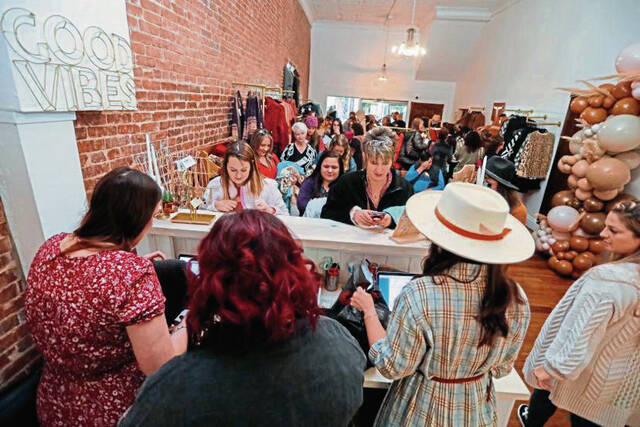Someone gives you a gift.
It’s the wrong size. It’s a duplicate. Maybe you don’t like it.
You want to return it.
After months of shopping leading up to Christmas, some people will be heading back to the stores Dec. 26.
That’s a day known for holiday gift exchanges.
In 2020, retailers estimated that 13.3% of holiday sales would come back as returns, according to the National Retail Federation. Holiday returns are estimated to reach $101 billion — about one-fourth of returns for an entire year, according to the retail federation.
Bring the receipt
When bringing something back to a store, it helps to have the correct information. That benefits the shopper and the retailer, said Kevin Miscik, owner of Lapels, A Fine Men’s Clothier in Greensburg.
“We try to do everything we can at the time of a sale to make sure we give the customer a detailed receipt and, if it’s a gift, a gift receipt,” Miscik said. “That will make the experience better for them or the person they give it to if they need to return it. They will get the proper amount for the item or full store credit.”
Miscik suggests when giving a gift to only remove the price portion of the tag. Keep the other tickets attached. Those tags usually have important information that can allow a retailer to easily find the merchandise in its system.
It is also important to know a store’s return policy, Miscik said. That is most often found on the receipt, a business’ website or in the store.
“Be respectful of a store’s return policy,” Miscik sad. “Those policies are in place for a reason.”
“As far as return policy, we’re not happy unless you are,” said Carol Kinkela, owner of women’s clothing and boutique Carabella in Oakmont.
Kinkela said she appreciates getting merchandise back within the same season.
Return in a timely manner
Melanie Nuttall agreed about the importance of returning items in a timely manner.
Nuttall, owner of The Nutthouse Boutique in Lower Burrell, said it doesn’t have to be the day after Christmas, but don’t wait until February either, if possible.
She extended her return deadline until the end of January on items purchased on Black Friday or afterward.
“We give them time because I try to think about what I would want if I was a customer,” Nuttall said.
She said it’s also important to remember some merchandise is a final sale and not returnable.
Nuttall said if you are going to return clothes, don’t wear it or damage them and then try to return them. Bringing a receipt speeds up the return process, although some stores have technology available where a receipt isn’t needed.
At East West Boutique in Vandergrift, co-owner Dessie Mitcheson Pilek said she offers a full refund if the item is returned within 14 days of purchase.
“After 14 days, we do store credit,” she said. “We always want all of our customers to feel the best in what they purchase from us. We also let them exchange items for other sizes as long as it’s returned within 30 days.”
Returns could be viewed as a good thing. They are an opportunity for retailers to engage consumers. In-store returns can be a vehicle to meet and convert an online buyer or encourage shoppers to make an additional purchase.
“Returns are a moment of truth,” says Tom Rittman, vice president of marketing at Appriss Retail, a retail analytics company. “Since your best shoppers typically make the most returns, they are a great touchpoint to build loyalty.”
According to National Retail Federation, 69% of holiday shoppers prefer to return unwanted gifts or holiday items in the store.
Online returns are also increasing, but retailers can reduce the impact of future returns by providing easy access to fit and sizing information, according to the retail federation.
“More than ever, customers are expecting a higher level of service at every point in the shopping journey,” said Caroline Turner, senior vice president of client development at Optoro, a company that offers returns technology to help improve processing and to route returned goods to another customer.
There is a certain amount of risk in returns, not only in terms of the cost of returning the item but also the relationship with customers, according to the retail foundation.
Every year, more than 15% of retail goods are returned or they never sell at all, according to Optoro. That can cost retailers billions of dollars.
Furthermore, retailers estimated in 2020 that an average of 10% of holiday returns would be fraudulent, according to the retail foundation and Appriss Retail’s annual report. That was higher than the 6% that they expected to be fraudulent for the entire year.
Fraudulent returns include stolen merchandise and used, nondefective merchandise.















